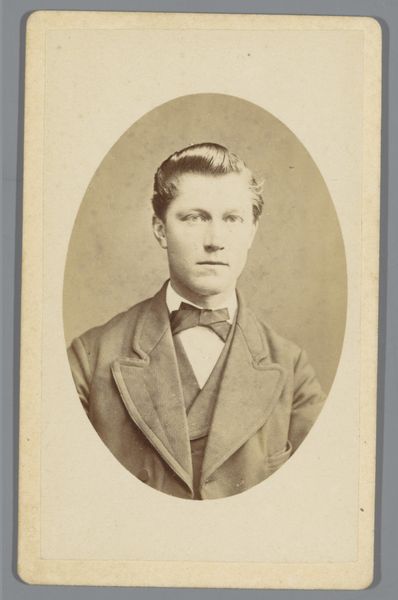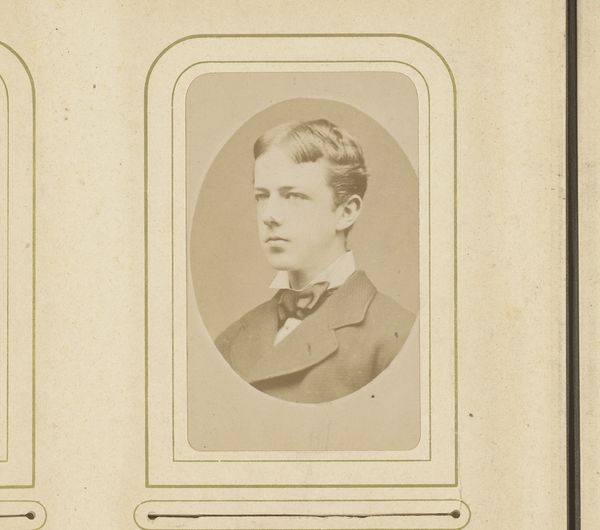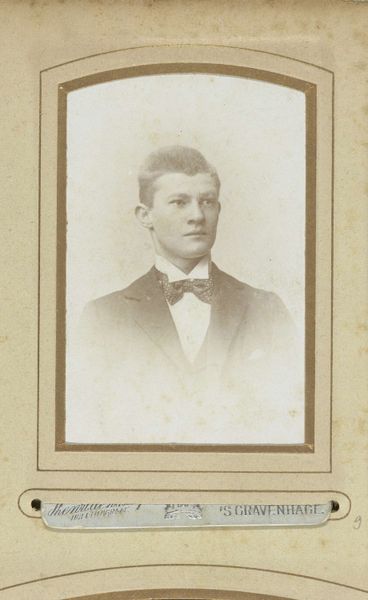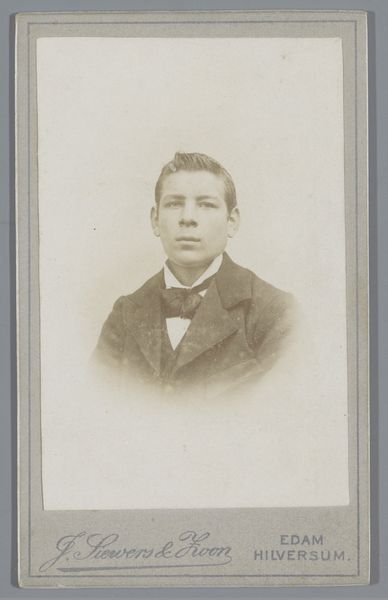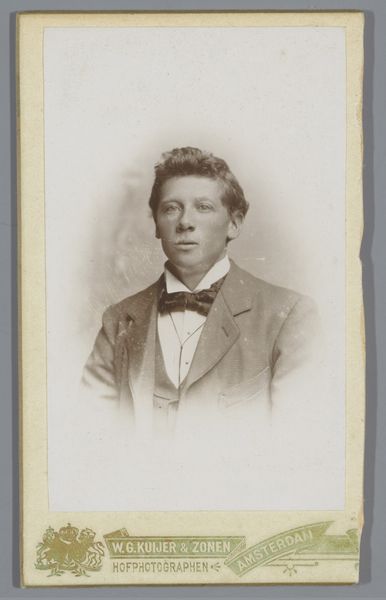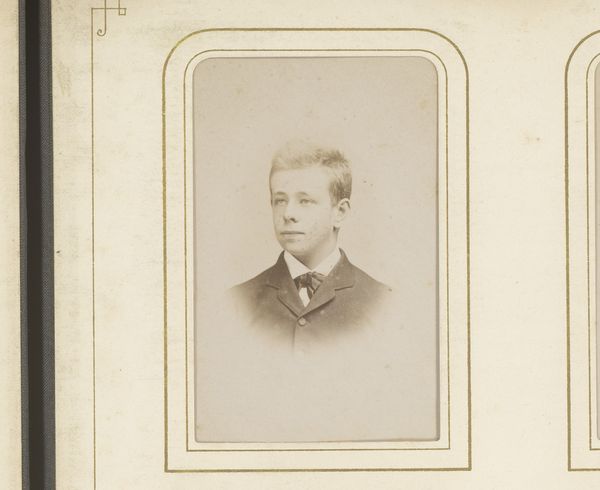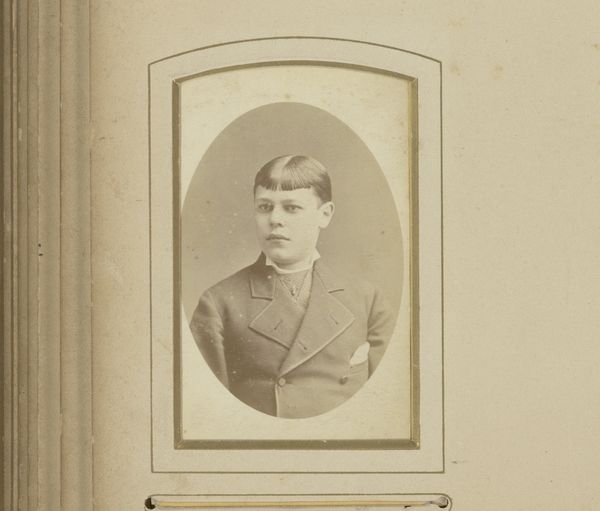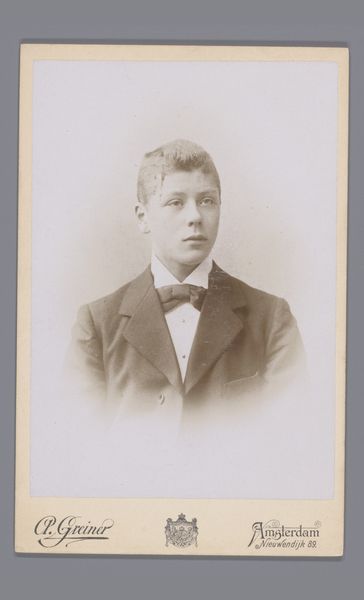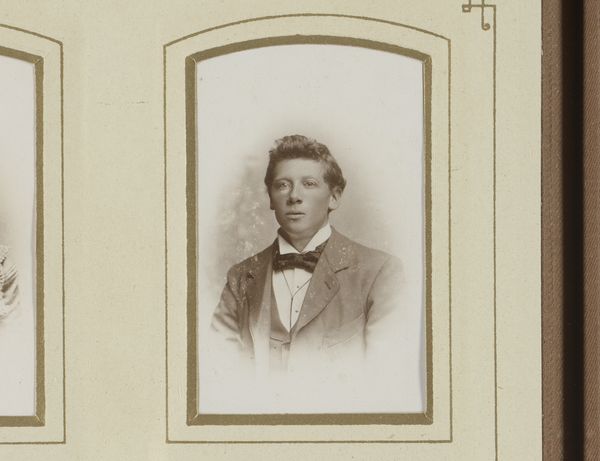
Studioportret van een jongeman in een colbert met een geruite strik c. 1863 - 1866
0:00
0:00
photography, albumen-print
#
portrait
#
photography
#
albumen-print
Dimensions: height 80 mm, width 54 mm, height 296 mm, width 225 mm
Copyright: Rijks Museum: Open Domain
Editor: This is a studioportrait of a young man in a blazer and a checkered bow tie, likely taken between 1863 and 1866. The artist is Albert Greiner and it's an albumen print, currently held in the Rijksmuseum collection. The sepia tones and the subject's serious expression give it a really somber feel, almost as if he’s burdened by the expectations of his time. What do you see in this piece? Curator: This portrait speaks volumes about the performativity of masculinity in the mid-19th century. Note the controlled pose, the meticulously styled hair, and the precise tailoring of the coat. These weren't accidental choices. This portrait was produced and consumed in a society deeply invested in projecting a very specific image of respectable young men. How might his class and social position influence his pose? Editor: That's a good point. He probably belonged to the bourgeoisie and it looks like this image attempts to communicate those values of stability, prosperity, and respectability. Curator: Exactly. Now, consider the power dynamics inherent in portraiture, particularly photographic portraiture, at this time. The sitter is essentially surrendering their image to the photographer and, by extension, to a wider public. How does this relate to contemporary discussions around visibility and representation? Editor: It makes you wonder about his agency. Did he have a say in how he was portrayed, or was he simply a subject conforming to societal ideals and the vision of the photographer? That relates to the contemporary discussions in many ways since a photographer captures you, but there’s still a choice to be represented. Curator: Precisely! By viewing this image through the lens of social history and critical theory, we can unpack not just what the photograph shows, but also what it reveals about the anxieties and aspirations of a particular historical moment and its relations to today. Editor: Thank you, that really gave me a new understanding of portraiture, especially within a historical and cultural framework. Curator: I agree. It is a stark reminder that visual representation is never neutral, always a carefully constructed narrative reflecting a complex web of power and meaning.
Comments
No comments
Be the first to comment and join the conversation on the ultimate creative platform.
